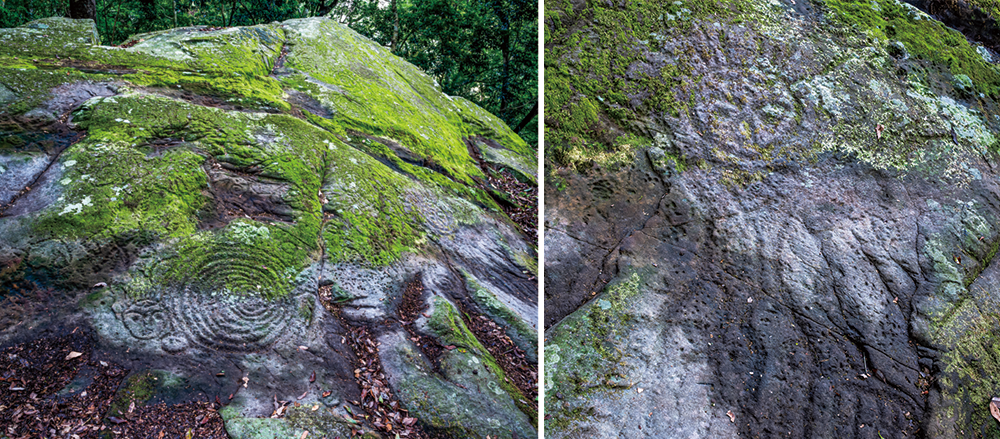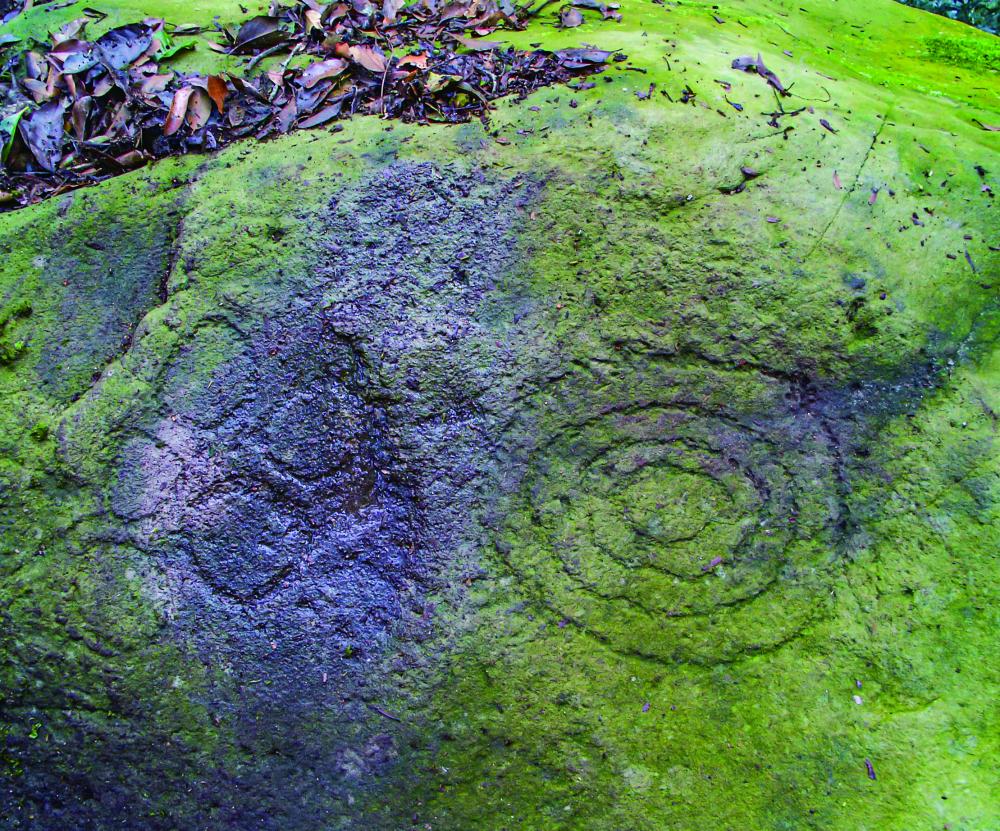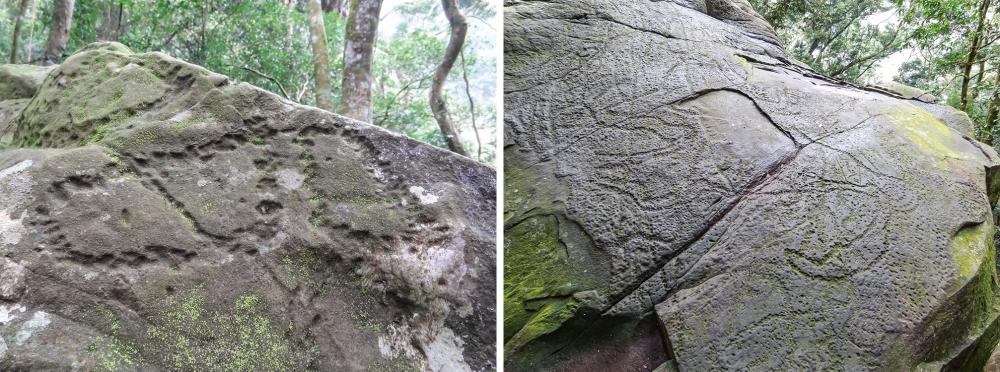發布日期:2023-08-23更新日期:2023-08-23
Explore the Mysterious Petroglyphs at National Wanshan Rock Carvings Archaeological Site
Carvings on rock surfaces at the National Wanshan Rock Carvings Archaeological Site(國定萬山岩雕考古遺址)are primitive artistic relics left by Taiwan’s early indigenous inhabitants. The site, the only one of its kind to have been found in Taiwan, is located in pristine forest near Wanshan indigenous community in Kaohsiung’s Maolin District. Wanshan and the other settlements in Maolin are inhabited by members of the Drekay (Rukai) tribe.

Gubatsaeh Rock Carvings
To see these stunning petroglyphs, one must spend four days trekking through mountains and crossing streams. The myth of the “Snake-Eating Woman,” passed down from one generation of Drekay people to the next, adds a touch of mystery to the carvings, making them even more captivating.
According to the “Snake-Eating Woman,” there was once a woman from the Bunun indigenous tribe who was married to a Drekay man. She cooked and ate deinagkistrodons(百步蛇, “hundred-pacer vipers”), creatures which the people of Wanshan regard as the guardians of their ancestors and animals that must not be defiled. Having broken a taboo, she was expelled from her husband’s household. They agreed to meet at a large rock, and during the waiting time, the woman drew on the rock using her fingers. This scene is said to have taken place at Gubatsaeh(孤巴察峨), one of the Wanshan rock-carvings locations.

Dakarau Rock Carving
In 1978, Gao Ye-rong(高業榮), a professor at the college that later became National Pingtung University, guided by Wanshan residents, discovered the first and second rock-carving sites, Gubatsaeh and Tsubulili(祖布里里). In 1984, the third rock-carving site, Sanaginaeh(莎娜奇勒娥), was located. A fourth site, Dakarau(大軋拉烏), was found in 2022.
In 2008, the Ministry of Culture officially designated the carvings as the National Wanshan Rock Carvings Archaeological Site, protecting 14 carvings at the four different sites.

Tsubulili Rock Carving/Sanaginaeh Rock Carving
「國定萬山岩雕考古遺址」刻鑿於岩石表面的圖形是臺灣早期住民原始的藝術遺跡,目前在臺灣其他地區尚未發現類似遺址。「萬山岩雕群」位於高雄市茂林區魯凱族萬山舊部落的原始森林中,想看到岩雕得跋山涉水4天,而流傳在魯凱族原住民「吃蛇的女人」的神話故事,為岩雕增添神秘色彩,引人入勝。
「吃蛇的女人」的神話故事講述一位嫁入魯凱族萬山社的異族女子,烹煮百步蛇食用,但萬山人視百步蛇為守護祖靈,不可褻瀆的象徵,女子因而被夫家逐出家門,她與丈夫約定於大石處見面,等待期間女子以手指在岩塊上作畫,相傳故事的場景就在「萬山岩雕群」的「孤巴察峨」(Gubatsaeh)。
1978年,任教屏東師專的高業榮教授,在萬山族人帶領下發現第1及第2座岩雕遺跡「孤巴察峨」及「祖布里里」;1984年發現第3處岩雕「莎娜奇勒娥」;2002年,又發現第4處岩雕「大軋拉烏」,文化部於2008年正式公告指定為「國定萬山岩雕群考古遺址」,共有4處14座岩體。
「孤巴察峨」萬山語為「有紋樣的石頭」之意,是岩雕群中紋飾最多、最豐富的一座,岩石表面刻鑿人像紋、圈狀紋等紋飾。
為維護萬山岩雕,高市府文化局於2021年成立部落巡守隊,乾季期間上山巡查,與部落共同管理萬山岩雕遺址,部落巡守隊長曾銘輝鼓勵部落青年共同守護萬山的資產,培養年輕一輩對家鄉的認同感。